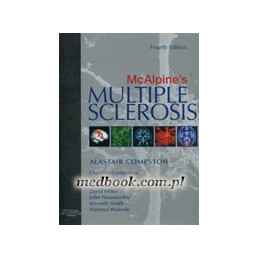- Reduced price

Order to parcel locker

easy pay


 Delivery policy
Delivery policy
Choose Paczkomat Inpost, Orlen Paczka, DHL, DPD or Poczta Polska. Click for more details
 Security policy
Security policy
Pay with a quick bank transfer, payment card or cash on delivery. Click for more details
 Return policy
Return policy
If you are a consumer, you can return the goods within 14 days. Click for more details
The state-of-the-art 4th Edition presents the most recent information on the genetics and epidemiology, clinical neurology, pathogenesis, and management of this common neurological disease.
Amply illustrated and referenced and beautifully written, McAlpines Multiple Sclerosis has been described as A standard reference for multiple sclerosis researchers, embryonic MS-ologists and hard-pressed clinical neurologists alike (Brain, review of the last edition).
Data sheet
